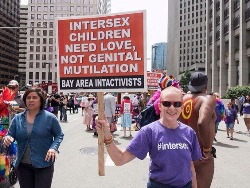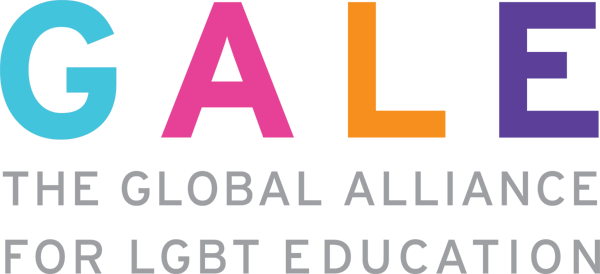Being an ally to intersex students in schools

10 December 2016 - Recently, ILGA-Europe and the federation of Intersex organizations OII-Europe published a toolkit on how to be a good ally of intersex people. The document provides some pointers to how schools, school consultants and educators can take intersex issues into account in their work.
Intersex?
Not all LGBT educators are already aware of what intersex is. Intersex individuals are born with sex characteristics (such as chromosomes, genitals, and/or hormonal structure) that do not belong strictly to male or female categories, or that belong to both at the same time. Doctors often advise parents to perform surgical and other medical interventions on intersex newborns and children, to make their body (seemingly) conform to male or female characteristics. In most cases, such interventions are not medically necessary and can have extremely negative consequences on intersex children as they grow older.
For some time, intersex people were ambiguous about being connected to the LGBT movement. Many of them see themselves as "having an intersex condition", which is not, or they do not want to view as an important part of their identity. Joining an identity based movement could be seen as a risk. But recently, intersex organizations have begun to cooperate when they saw that a good cooperation between the LGB en T organizations could lead to real legal and social benefits for transgender persons.
A school challenge
Not much research has been done on the experiences of intersex students in schools. However, a recent Australian study managed to get data on 272 intersex individuals, aged 16-85+. This study showed that only a quarter of participants rated their overall experience at school positively. The overwhelming majority of participants (92%) did not attend a school with inclusive puberty/sex education. About 18% of people with variations of sex characteristics had primary school education only (compared to 2% of the general
Australian population). Many participants (66%) had experienced discrimination ranging from indirect to direct verbal, physical or other discriminatory abuse. Well-being risks
were reportedly high.
Problems can exist for intersex people in educational settings from the very outset. To start with, intersex people are not constructively included in any educational curriculum. Most often, they do not appear at all. If they are mentioned, they find themselves treated as an imaginative product of mythology (hermaphrodite), as an example of abnormity or viewed in a pathological way (in biology texts, medical handbooks or encyclopedias). In addition, sex education does not refer to their existence or their bodily experience.
Binary gender views are the core of discrimination
Earlier this year, UNESCO published a series of studies which showed how gender nonconformity lies at the core of both LGB and T discrimination in schools. Obviously, this also applies for intersex students. Sex education and the school environment tends to perpetuate the notion that only two sexes exist. Intersex students may face direct discrimination at school and in further education if their gender expression, stature or other parts of their appearance do not conform with the female or male norm. Places where the body becomes visible to others, such as toilets and changing rooms, are common areas of anxiety and reported harassment.
Operations during school holidays
On an even more alarming level, intersex individuals also face educational impairments directly linked to the violation of their bodily integrity. Most surgeries, which are performed at an early age, lead to several follow-up operations over the years. These are often performed during the school holidays, at the expense of the child’s need to relax and have fun. Some children drop out of school as a result of this long-term recovery process.
Unwanted hormonal treatment, in childhood or puberty, with the aim of altering the body towards the assigned sex has also been reported to coincide with a decrease in school grades. This physical and psychological strain often prevents intersex people from developing their full potential and leads to under-achievement at school. As a result, these children and young adults face significant difficulties in obtaining a higher education degree and are at risk of poverty when growing older.
Integrate intersex in your education
A small but important support LGBT educators can offer is to integrate intersex issues in their education. For example, GALE often uses a "knowledge quiz" in its trainings to both create an interactive discussion and to give up-to-date information about sexual diversity and school change. Standard are questions about what words like lesbian, gay, bisexual, transgender, transvestite and intersex actually mean and where they come from. Of course, educators should make sure that they are up-to-date and correct themselves and that they know how to limit their information to the facts that are really needed to create the necessary understanding and sensitivity. Too much and too detailed information can lead to adverse effects.
The OII-Europe and ILGA Europe toolkit warns against starting full projects on intersex when intersex people are not involved in the project. When you intend to create a specific training or project on intersex, make sure you build intersex leadership in your own organization first.


